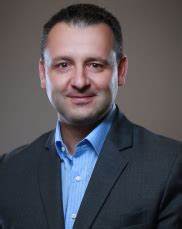Clinical guidelines and recommendations should contribute to high quality patient care.
But it’s rarely recognized how long doctors take to implement guidelines, say researchers who are behind a article recently published in the BMJ.
Here, Minna Johansson, Gordon Guyatt and Victor Montori advocate including an assessment of the time needed to implement the guidelines – time needed to process – when new guidelines are written.
The three researchers from Sweden, Canada and the United States respectively think it could change the recommendations of committees developing new guidelines – and help GPs set priorities.
27 hour working day
There are a number of studies which illustrate that it is impossible to follow all the recommendations of relevant guidelines for general practitioners, write the BMJ researchers.
Here they highlight, among other things, calculations from the United States, which show that if doctors in the primary health service were to implement all relevant guidelines for preventive treatment, treatment of chronic diseases and treatment of urgency would require a delay of 27 hours working day.
Calculations published two years ago shows that if physicians in the United States were content to simply follow preventive treatment guidelines in the primary health service, it would require 8.6 hours of work per day.
– I don’t think anyone did this maliciously, but it’s complete nonsense – no one can work 27 hours a day, says Minna Johansson, GP and researcher, for Lakartidningen.
VISIBILITY: – I totally agree that you need to make this visible with the use of time, says NFA leader Marte Kvittum Tangen. Photo: Thomas Eckhoff, Medical Association
– Completely unmanageable in Norway
The head of the Norwegian Association for General Practice (NFA), Marte Kvittum Tangen, says primary care doctors in Norway also have many guidelines to follow.
An estimate shows there are 74 national professional recommendations, 40 procedure packages and 68 guides that are relevant to GPs, according to the NAF chief.
– The situation in Norway is such that if we have to follow all the guidelines for all patients at all times, it will be completely unmanageable, she tells Dagens Medisin.
– So here, general practitioners make priorities every day. It would be nice to be able to make it visible, so you get a common understanding of the resource usage that is required when you add something to a guideline, adds Kvittum Tangen.
– An indicator light
The Global Center for Sustainable Healthcare, of which Minna Johansson is the director, has created a site that explains the method.
Here, “Time Needed to Treat” (TNT) is described as a new method that can help, for example, those who develop recommendations to consider clinicians’ time as a limited resource when formulating their recommendations.
Here it appears that TNT can be expressed as follows:
- Time required to improve patient outcomes
- Time required to deliver the intervention to all eligible individuals in a population
- The proportion of the total time available for patient care needed to implement the intervention for all eligible patients
– The idea is that it should act as a warning light for those who write the guidelines, says Johansson in Läkartidningen.
– Interesting and exciting
Kvittum Tangen likes the idea that along with the guidelines, the time required for their implementation should be listed. She thinks it can be a useful tool when considering new guidelines.
– What they described as “the time needed to process”, is very interesting and exciting to discuss.
– I totally agree that you need to make this visible with the use of time.
Want a priority debate
She thinks this will be a good starting point for a priority debate.
– When it is made visible, it will have to be decided if it is the correct use of GP time. And then you have to compare the different recommendations and see what is most important, what ensures the best health for the population.
This will give doctors a better basis to do the most important things first and give the best to those who need it most, which is a basic principle in general medicine, believes the NFA leader.
– I think doctors do it today, but then it’s more discretionary. This is a contribution to the prioritization debate that has long been demanded for general practice, says Kvittum Tangen.
Read also: KS: – We don’t have enough GPs, we need a working ALIS system

“Tv guru. Analyst. Lifelong alcohol junkie. Friendly bacon specialist. Twitter nerd.”







